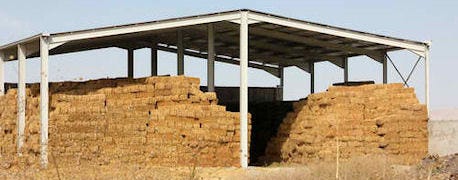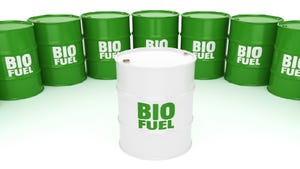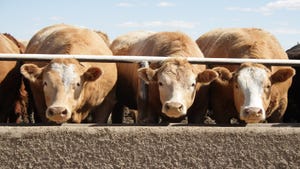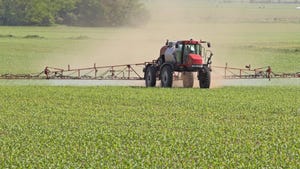August 28, 2012

Because of this year's drought, U.S. cattle farmers are facing a short feed supply. Farmers searching for affordable feedstuffs should consider ammoniating low-quality forages, like corn stalks, to supplement their feeding programs, a University of Missouri agriculture business specialist says.
"Ammoniating low-quality forage produces several benefits," says Whitney Wiegel, MU specialist. "Ammoniation increases the digestibility and crude protein content of forage. It also improves intake and inhibits mold development in high-moisture roughage," he says.

A University of Missouri specialist says there are many benefits, but it's necessary to weigh the costs, too.
Farmers who choose to ammoniate low-quality forage (forages with less than 50% total digestible nutrients) can expect digestibility to increase 8 to 18% depending on the type of forage ammoniated and its initial digestibility level, he says.
Ammoniation can also increase crude protein content by 4.5 to 11% and improve dry-matter intake by more than 30%.
"Because intake is one of cattle producers' biggest concerns when it comes to meeting cows' nutritional requirements with forage, dry-matter intake is probably the greatest benefit of ammoniation," Wiegel says.
While there are many benefits to ammoniation, a farmer must also consider the added costs of ammoniating forages.
"With regard to material costs, the main items required are anhydrous ammonia, polyethylene sheeting, tubing and tractor fuel," he says. Farmers may also wish to include the cost of labor in their calculations. "Of all the costs, the cost anhydrous ammonia will undoubtedly be the greatest."
To add further detail to the cost analysis, Wiegel describes a typical scenario:
Using a 40- by 100-foot sheet of black polyethylene, which costs $180, a farmer can ammoniate about 70 large round bales. If each bale weighs 1,000 pounds, the farmer has 70,000 pounds of forage. If the bales are 85% dry matter, the farmer has 59,500 pounds of dry matter. If the recommended amount of anhydrous to use is 3% of the dry-matter weight, the farmer needs to use 1,785 pounds of anhydrous.
"The price of anhydrous ammonia in this example is $720 per ton, which means that it costs $643 to purchase the recommended amount of anhydrous," Wiegel says. If tubing supplies cost $50, tractor fuel costs $38, and labor costs $180, the total cost of ammoniation is $1,091, or $31 per ton of forage.
Will the increase in quality be worth the extra cost of ammoniation?
"To quantify the value of improved quality, reference values for TDN and crude protein must be obtained," he says.
In this scenario, Wiegel assumes that a pound of TDN from corn is worth 15 cents and a pound of crude protein from soybean meal is worth 31 cents (based on an $8 per bushel corn price and a $537 per ton price for soybean meal).
If ammoniation improves TDN by 5% and crude protein by 8%, an equivalent of 100 pounds of TDN and 160 pounds of crude protein are added to a ton of forage through ammoniation.
Using the reference values of 15 cents per pound of TDN and 31 cents per pound of crude protein, ammoniation increases the value of forage by $55 per ton on a dry-matter basis, or $47 per ton with forage at 85% dry matter.
"Compared to ammoniation costs of $31 per ton, the value added to forage, $47 per ton, is enough to justify the decision to ammoniate low-quality forage," he says.
For more information about ammoniating forages, contact your local extension center.
"There are several important considerations in ammoniating forages, so please seek advice before ammoniating forages for the first time," Wiegel says.
You May Also Like




